All projects have a beginning, a middle and an end. Since they can last for a long time, it is more convenient to divide their total time-span into smaller periods of time. In the context of PM², these periods of time are called Phases.
PM² defines four Phases (Initiating, Planning, Executing, Closing), which are sequential and non-overlapping.
PM² provides a simple and effective Lifecycle which organises project management activities in 4 Phases and in one overarching process group.
The PM² phases take their name from the types of activities prevailing in each phase (I.e. initiating type of activities are dominant in the Initiating Phase, etc.). Note that while phase-related activities peak in terms of effort during a specific phase, activities of this type are not excluded during any of the other phase(s) (e.g. planning type of activities are also repeated in the Executing Phase). For more on this, see NOTE 1 and NOTE 2 at the end of this article.

It is also worth mentioning that Monitor & Control is not a PM² Phase but a collection of recurring management activities which are executed throughout the project (during any of the 4 PM² Phases).
PM² Phases never overlap, as no period of time can ever overlap with another period of time.
PM² Phases encompass the project management activities and project work that need to be done in order to complete the project. Project management work is described in the generic, but also tailorable project management processes of the PM² Methodology, while the project work plan captures the specific activities needed in order to produce all project deliverables and define the project’s scope.
What about stages and iterations? Any number of stages can run within a PM² Phase. If activities follow the same cycle (e.g. see the CIR cycle (Coordinate, Implement, Review) of Agile PM²), then we can also include iterations within the Phases. One would expect to find stages and/or iterations more often in the Executing Phase, but Initiating or Planning stages or iterations can also be defined as per the needs of a project (or types of projects). For (a bit) more on this, see NOTE 3 at the end of this article.
Modelling your project life-cycle with sequential non-overlapping phases enables the project to move forward in a more controlled way, and helps project teams keep their focus on completing the activities (and achieving the goals) of each phase instead of working on any type of activity at any moment in time. For instance, the existence of a distinct Closing Phase reminds project teams to focus on activities related to the closing of the project, and not to be occupied with executing type of activities (which, by the way, should have been 100% completed before ever allowing the project to move to the Closing Phase).

Every phase has a start and an end. There are usually common activities and events connected to the starting and the ending of each phase (i.e. phase kick-off meetings and phase gates). In its project management lifecycle, PM² defines 3 Phase Gates: Ready for Planning (RfP), Ready for Executing (RfE) and Ready for Closing (RfC).
These Phase Gates consist of an assessment and an approval. However, some organisations or projects may decide to implement it in a very formal way, while others in a less formal one (e.g. as a self-assessment based on a phase-exit review checklist).
A project should only proceed to the next phase when the goals of its current phase have been marked as achieved. If the goals of the Phase have not been satisfactorily achieved, then the project should remain in that phase (i.e. a phase is prolonged, to allow the completion of the activities, and to achieve the goals of the Phase). Allowing a project to move forward to a subsequent phase although it still hasn’t achieved the goals of a previous phase is a bad practice that raises the overall project risk level.
Declaring a project as being in a more advanced phase serves one and only one purpose: to create a false perception of progress.
The PM² Methodology Guide (download here) follows a clear and simple strategy in describing all the project management events and activities that take place during the life of a project: It presents, from the beginning to the end of a project, the timeline of events grouped in its distinct phases.
[NOTE 1]: The figure below (found on page 11 of the PM² Open Edition) helps to visualize the sequential (non-overlapping) PM² Phases and the phase-related actvities. In projects managed with an iterative approach, the overlapping of these activities would be much wider (see page A – 103 of the PM² Open Edition).
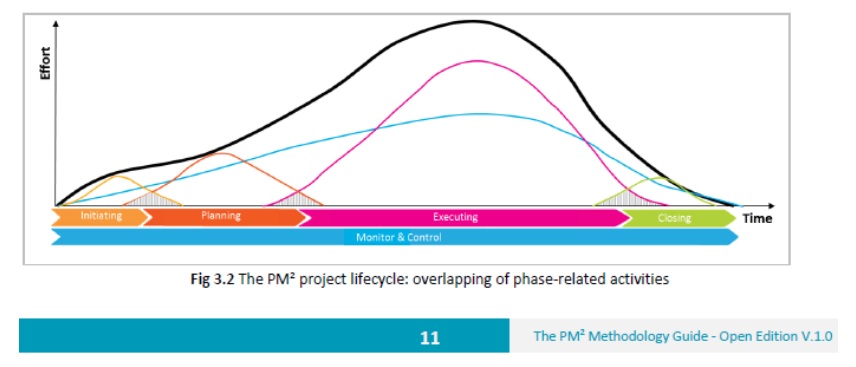
We see that Phase related activities can transcend phases (the curves in the figure above show that), however, the PM² Phases cannot overlap: A phase is a period of time and one has to finish before the next one can start.
The PM² Phases and PMI’s PMBoK Process Groups are not the same thing.
[NOTE 2]: Phase related activities consist the management activities executed while in a phase – providing a business justification and a defining a project, for instance, are examples of Initiating type activities. However, one can run an Initiating type of activity in any PM² Phase (e.g. in the Planning or Executing Phase). In fact, this is done when we need to change the definition of a project (through the Project Change process of Monitor & Control). In this case, it is obvious that the project does not go back in time to the Initiating Phase to do that, nor do we run an Initiating Phase in parallel to the current Phase. One simply runs an Initiating Phase activity in another phase. Here is a simple metaphor: Summer has finished and we are in November. It is, however, perfectly OK (and very much desirable) to have a beautiful summer day in November without having to declare that we are back in the season of summer, or to say that we are in two seasons in parallel (summer and autumn).
[NOTE 3]: See below a representation of the Agile PM² CIR Rhythm and the combination of the serial and non-overlapping PM² Phases with iterative
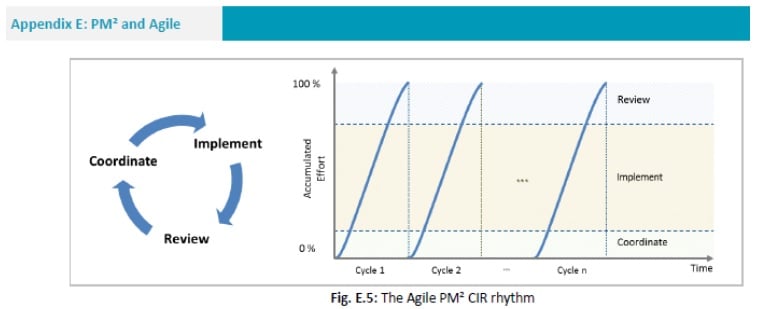
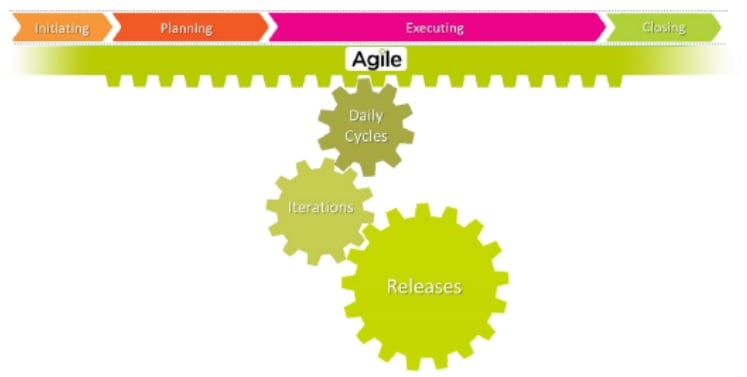
About the PM² Alliance
The PM²Alliance is an international, not-for-profit organisation based in Brussels and founded by PM² practitioners. It connects individuals from institutions, companies and academia to inspire dialogue, share resources, and address the field’s challenges while promoting the wider adoption of the PM² Methodology for the advancement of Project Management Europe and for the public benefit.
The PM² Alliance contributes significantly to enabling the sharing of knowledge and experiences and establishing PM² as a common, open and free methodology for all Europe – and beyond. Through its network of affiliated corporate and individual members, it enables conducting European wide communication and dissemination activities and events.
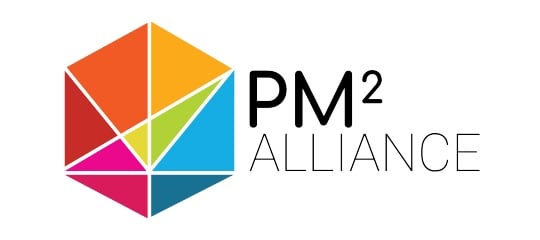
About the PM² Methodology
PM² is a Project Management Methodology developed and supported by the European Commission, aiming to assist project teams in managing their projects effectively and delivering solutions and advantagess to their organisations, partners and stakeholders.
PM² is not only lean and easy-to-use, but also it open-source and free; It embodies elements from a wide range of globally accepted project management and agile best practices, standards and methodologies, utilizing EU’s experience from the management of thousands of projects, organisational change initiatives, EU Programmes and Grants.
PM² provides a Project Governance Model (i.e. roles & responsibilities), a Project Lifecycle (i.e. project phases), a set of Processes (i.e. project management activities), a set of Project Templates (and guidelines for documentation), as well as a set of Mindsets (i.e. effective attitudes and behaviours).
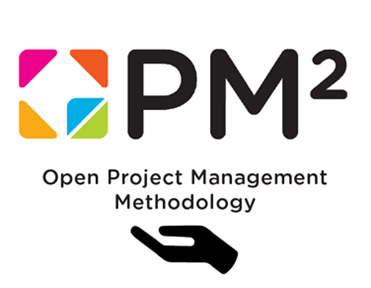
Looking for more information?
- The PM² Mindsets
- The PM² Governance
- Download the free PM² Guide





